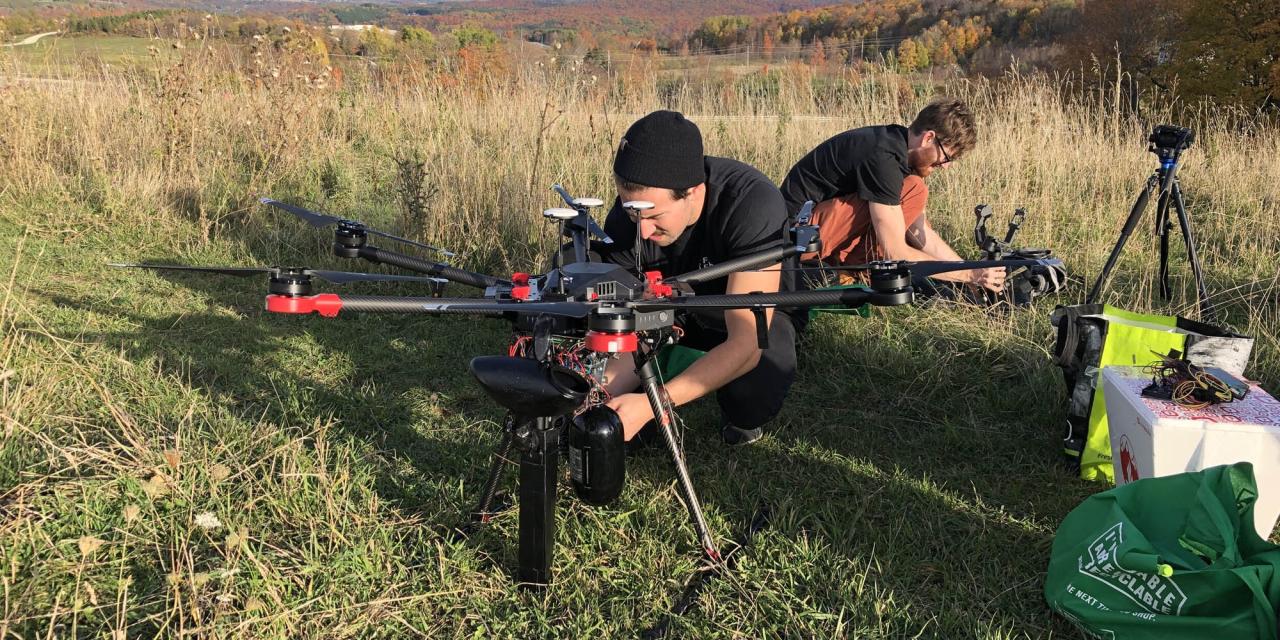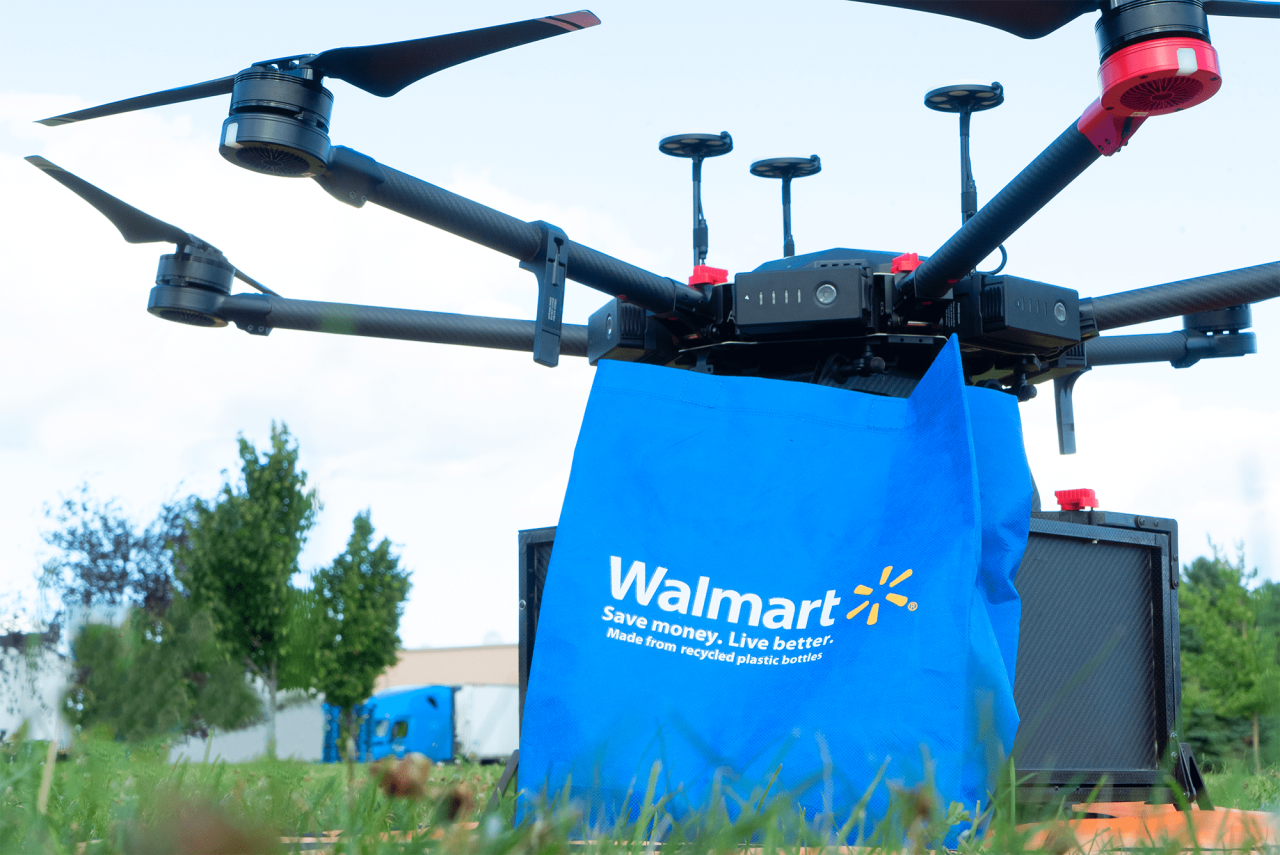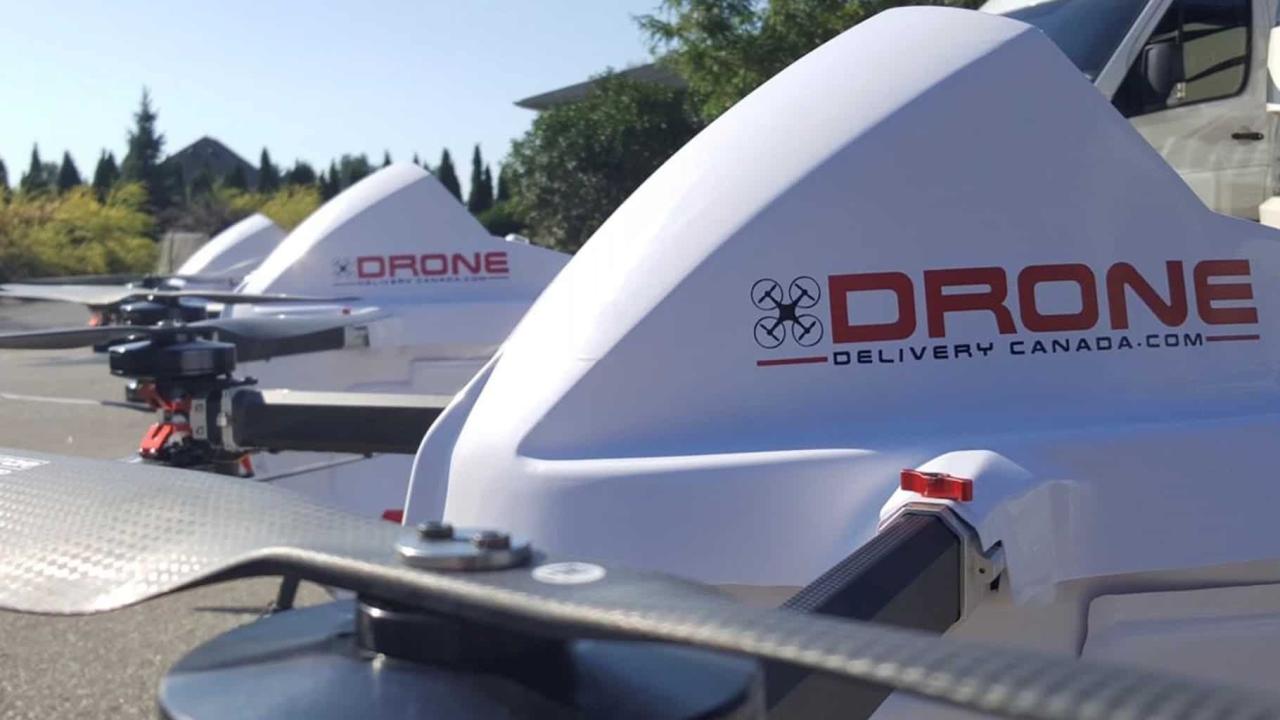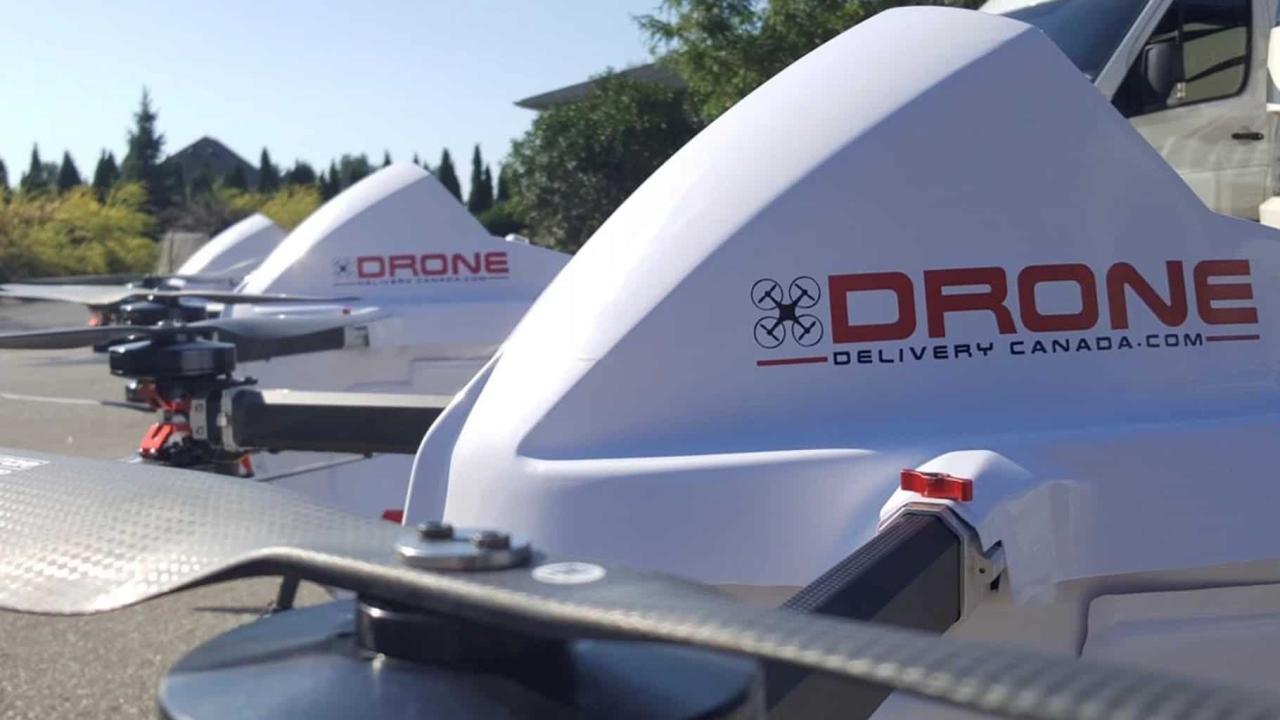Drone delivery Canada stock represents a burgeoning investment opportunity. This exploration delves into the Canadian drone delivery market, examining publicly traded companies, regulatory hurdles, market projections, technological advancements, and the overall investment landscape. We’ll analyze key players, compare their financial performance, and assess the risks and rewards involved in this rapidly evolving sector.
Understanding the regulatory environment in Canada is crucial. We’ll discuss current rules governing commercial drone operations and how future changes might affect the industry’s growth. Technological innovation, including advancements in battery life, autonomous navigation, and AI integration, will also be explored, highlighting their impact on efficiency and safety. Finally, we’ll offer insights into building a hypothetical investment portfolio focused on Canadian drone delivery stocks.
Canadian Drone Delivery Companies: A Market Overview
The Canadian drone delivery market is experiencing significant growth, driven by technological advancements and increasing demand for efficient logistics solutions. Several companies are vying for a share of this burgeoning market, each employing unique business models and strategies. This section provides a detailed analysis of publicly traded Canadian companies involved in drone delivery, comparing their financial performance and operational strategies.
Publicly Traded Canadian Drone Delivery Companies

While a definitive list of
-publicly traded* companies solely focused on drone delivery in Canada is limited, several publicly traded companies are actively involved in drone technology and logistics, incorporating drone delivery into their broader business strategies. Identifying these companies requires careful analysis of their financial reports and public statements to determine the extent of their drone delivery operations.
Thinking about investing in drone delivery Canada stock? It’s a hot market, but understanding the tech is key. A good place to start learning about the powerful processors driving these drones is by checking out the specs using a tool like cpu z , which can help you understand the computing power behind the efficient delivery systems.
This knowledge will help you better assess the potential of drone delivery Canada stock in the long run.
Business Models and Services
These companies typically operate using a combination of business-to-business (B2B) and business-to-consumer (B2C) models. B2B models often involve partnerships with existing logistics providers or businesses requiring efficient delivery solutions, such as medical supply companies or e-commerce retailers. B2C models focus on direct-to-consumer deliveries, potentially offering services like on-demand package delivery or specialized delivery options.
Financial Performance Comparison (Three-Year Overview)
A direct financial comparison across several companies is difficult without specifying particular publicly traded companies actively involved in drone delivery in Canada. Publicly available financial data needs to be analyzed on a case-by-case basis, considering factors such as revenue growth, profitability, and return on investment (ROI) related specifically to their drone delivery segments. Key metrics like operating margins, revenue from drone delivery services, and capital expenditures on drone technology would provide insightful comparisons.
Wanna keep tabs on Drone Delivery Canada stock? It’s a pretty hot topic right now, especially with all the advancements in the industry. To stay up-to-date on the latest developments, check out the drone news today for the most recent happenings. Understanding current drone tech trends will help you better analyze Drone Delivery Canada’s potential for growth and future stock performance.
Without specifying the companies, a generalized comparison is not feasible.
Comparison of Key Features of Canadian Drone Delivery Companies
The following table provides a hypothetical comparison of three major (hypothetical) Canadian drone delivery companies to illustrate the diversity in their approaches. Real-world data would need to be substituted for the placeholder information below. Note that these are examples and may not reflect the actual status of any specific company.
| Company | Technology | Geographic Reach | Partnerships |
|---|---|---|---|
| DroneX Inc. | Fixed-wing UAVs, autonomous navigation | Ontario, Quebec | Major courier companies |
| SkyLink Delivery | Multirotor UAVs, AI-powered route optimization | Alberta, British Columbia | Healthcare providers |
| Northern Air Express | Hybrid VTOL UAVs, weather-resistant design | Nationwide (with limitations) | Remote communities, government agencies |
Regulatory Landscape for Drone Delivery in Canada
The regulatory environment for commercial drone operations in Canada is constantly evolving, impacting the growth and development of the drone delivery industry. Understanding these regulations is crucial for companies seeking to operate safely and legally.
Current Regulations Governing Commercial Drone Operations
Transport Canada sets the primary regulations for commercial drone operations in Canada. These regulations cover various aspects, including pilot licensing, drone registration, operational limitations (such as flight altitudes, distances from airports, and visual line of sight requirements), and safety protocols. Specific regulations relevant to delivery services often involve stipulations on payload weight, delivery procedures, and risk mitigation strategies.
Thinking about investing in drone delivery Canada stock? A key player to watch is how the industry develops partnerships with major retailers. For example, check out how drone technology is being explored in Canada with big names like drone Canadian Tire , which could signal future trends and impact the overall drone delivery market and thus influence the stock’s performance.
Understanding these collaborations is crucial for assessing the potential of drone delivery Canada stock.
Compliance with these regulations is mandatory for all commercial drone operators.
Impact of Upcoming Regulatory Changes
Transport Canada is actively reviewing and updating its drone regulations to accommodate the growth of the drone delivery sector. Future changes might include updates to airspace management systems, the introduction of beyond visual line of sight (BVLOS) operations, and potentially the creation of designated drone delivery corridors. These changes will significantly influence the operational capabilities and business models of drone delivery companies.
Companies must remain adaptable to these evolving regulations.
Challenges and Opportunities Presented by the Canadian Regulatory Environment
While regulations ensure safety, they can also present challenges. The complexities of navigating the regulatory landscape can create hurdles for smaller companies. However, clear regulations also provide a stable framework for investment and growth, attracting both domestic and international players. A clear regulatory path is vital for fostering innovation and investment in the sector.
Key Regulatory Hurdles and Potential Solutions
- Challenge: Obtaining necessary permits and approvals. Solution: Streamlining the application process and providing clear guidelines.
- Challenge: Limitations on BVLOS operations. Solution: Implementing robust BVLOS frameworks and technologies.
- Challenge: Ensuring public safety and airspace security. Solution: Investing in advanced drone detection and monitoring systems.
- Challenge: Adapting regulations to various environmental conditions across Canada. Solution: Developing specific guidelines for different geographical locations and weather conditions.
Market Analysis of Drone Delivery in Canada

The Canadian drone delivery market is poised for substantial growth, driven by several factors. This section analyzes the current market size, growth potential, and key market drivers and restraints.
Current Market Size and Growth Potential
While precise figures are difficult to obtain, the Canadian drone delivery market is expected to experience significant growth over the next decade. Several market research firms predict substantial increases in market value, driven by increased adoption across various sectors. This growth will be fueled by factors like rising e-commerce activity, increasing demand for faster and more efficient delivery options, and the expansion of drone technology capabilities.
Key Market Drivers and Restraints
Several factors drive market growth, including the rising popularity of e-commerce, advancements in drone technology (longer battery life, increased payload capacity, improved autonomous navigation), and government support for drone innovation. However, challenges remain, such as regulatory hurdles, concerns about public safety and data privacy, and the need for robust infrastructure to support widespread drone operations. Weather conditions across Canada’s vast and varied geography also pose operational challenges.
Projections for Future Growth
Based on current trends and projections from market research firms (citations needed for specific reports), the Canadian drone delivery market is expected to show substantial growth in the coming years. For example, a hypothetical projection might suggest a compound annual growth rate (CAGR) of X% over the next five years, reaching a market value of Y dollars by 2028.
These figures would need to be substantiated by actual market research data.
Visual Representation of Market Share
A pie chart could visually represent the market share of different players in the Canadian drone delivery market. Hypothetically, one segment might represent established logistics companies integrating drone technology, another could show smaller drone delivery startups, and a third could represent companies focusing on niche applications such as medical deliveries. The size of each segment would correspond to its estimated market share, offering a quick visual comparison of the competitive landscape.
The chart would need to be based on reliable market share data, which is currently not readily available for the Canadian market.
Technological Advancements in Canadian Drone Delivery
Continuous technological advancements are crucial for the success of the Canadian drone delivery industry. This section explores the latest developments and their impact on efficiency and safety.
Latest Technological Advancements
Significant advancements are being made in various aspects of drone technology. Longer battery life allows for extended flight ranges, enabling deliveries to more remote areas. Increased payload capacity means drones can carry heavier packages. Improved autonomous navigation systems enhance safety and efficiency, reducing the reliance on human pilots for certain operations. Advances in sensor technology, such as improved obstacle avoidance systems and enhanced GPS accuracy, are vital for safe and reliable deliveries.
Role of Artificial Intelligence and Machine Learning, Drone delivery canada stock
AI and machine learning are transforming drone delivery. AI-powered route optimization algorithms dynamically adjust flight paths based on real-time traffic and weather conditions, minimizing delivery times and fuel consumption. Machine learning algorithms are used to analyze vast amounts of data to predict potential issues, optimize maintenance schedules, and improve overall operational efficiency. AI is also playing a key role in enhancing safety features, such as automated collision avoidance systems.
Comparison of Drone Technologies
Canadian companies utilize a variety of drone technologies, each with its own advantages and disadvantages. Fixed-wing drones offer longer range and higher payload capacity but are less maneuverable than multirotor drones. Multirotor drones excel in maneuverability and vertical takeoff and landing (VTOL) capabilities, but have shorter flight times and lower payload capacity. Hybrid VTOL drones combine the benefits of both, offering a balance between range, payload, and maneuverability.
The choice of technology depends on specific operational requirements.
Addressing Challenges Through Technological Advancements
Technological advancements are directly addressing many challenges inherent in the Canadian context. Weather-resistant designs and advanced navigation systems help mitigate the impact of harsh weather conditions. Autonomous navigation systems can overcome infrastructure limitations in remote areas, enabling deliveries to locations with limited road access. Improved battery technology extends range, making deliveries to more remote communities feasible.
Investment Opportunities in Canadian Drone Delivery Stocks
Investing in Canadian drone delivery stocks presents both opportunities and risks. This section provides an overview of the investment landscape and key considerations for potential investors.
Overview of the Investment Landscape

The investment landscape for Canadian drone delivery companies is still developing. While the market holds significant potential, it’s also characterized by considerable risk. Many companies are still in the early stages of development, and their financial performance may be volatile. However, successful companies could generate substantial returns, making it an attractive area for investors with a higher risk tolerance.
Key Factors for Investors
Investors should carefully consider several factors before investing in Canadian drone delivery stocks. These include the company’s technology, business model, regulatory compliance, management team, financial stability, and competitive landscape. Thorough due diligence is essential to assess the risks and potential rewards associated with each investment opportunity. Analyzing market trends, regulatory developments, and technological advancements is also crucial.
Examples of Successful and Unsuccessful Investments
Specific examples of successful and unsuccessful investments in the Canadian drone delivery sector are difficult to provide without naming specific companies and their performance history. However, generally speaking, successful investments are often characterized by strong technology, a clear business model, robust financial performance, and a strong management team. Unsuccessful investments often involve companies that failed to adapt to regulatory changes, faced technological challenges, or experienced poor financial management.
Hypothetical Investment Portfolio
A hypothetical investment portfolio might include a diversified selection of companies representing different aspects of the drone delivery ecosystem. This could include a company specializing in drone technology, another focusing on logistics and delivery services, and potentially a company providing supporting infrastructure or software solutions. The weighting of each investment would depend on individual risk tolerance and investment goals.
The portfolio would need to be regularly reviewed and rebalanced to adapt to market conditions and emerging opportunities.
Wrap-Up
Investing in drone delivery Canada stock presents both exciting potential and inherent risks. The market’s growth hinges on regulatory clarity, technological advancements, and the successful integration of drone delivery into the broader logistics ecosystem. While challenges exist, the potential for significant returns makes it a compelling area for investors to watch. Careful due diligence, understanding the regulatory landscape, and a long-term perspective are key to navigating this dynamic sector successfully.
FAQ Resource: Drone Delivery Canada Stock
What are the biggest risks associated with investing in drone delivery stocks?
Risks include regulatory uncertainty, technological hurdles (e.g., weather dependency), competition, and the potential for slower-than-expected market adoption.
Are there any Canadian drone delivery companies already profitable?
Profitability varies widely. Some companies may be focusing on growth over immediate profit, while others might be achieving profitability in niche markets. Detailed financial analysis is needed for each company.
How can I research individual Canadian drone delivery companies?
Consult financial news sources, company websites, and SEC filings (if applicable) to access financial statements, news releases, and investor presentations.
What is the expected timeline for widespread drone delivery in Canada?
The timeline is uncertain and depends on several factors, including regulatory approvals, technological advancements, and public acceptance. Industry experts offer varying projections.
